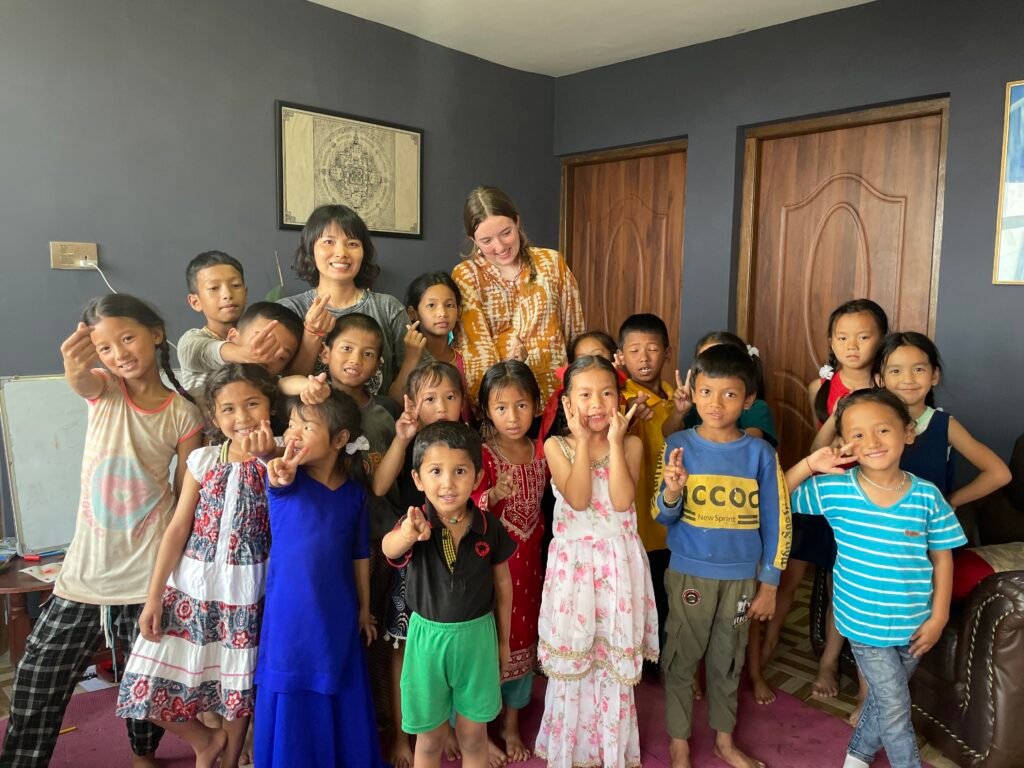In the narrow lanes of Kathmandu, where daily life moves fast and resources run thin, Sujan Pariyar has quietly built something radical: a children’s home that teaches children to feel, create, and belong. Children Home Nepal isn’t a “school” in the usual sense. It’s a living classroom — equal parts studio, playground, temple of laughter — designed specifically for children who’ve been left behind by traditional systems. What Sujan and his team offer goes beyond lessons; they offer dignity, curiosity and practical skills that change a child’s life.
The classes here are built around arts, yoga, creative play, music, and games — not because those subjects are “cute,” but because they teach things that matter most to children from disadvantaged backgrounds: confidence, attention, self-expression, teamwork and emotional safety.
Where a regular school focuses on textbooks and exams, Sujan’s program focuses on experiences. Instead of rote memorization, children learn through making: clay modelling to build fine motor skills and patience; storytelling circles to develop language and imagination; group painting to practice cooperation and emotional expression. Yoga sessions teach breathing and body awareness — tools kids can use when they’re anxious, hungry or exhausted. Games and drama sessions build social skills, leadership and the ability to resolve conflicts without fear.
Why this approach is particularly powerful for poor children
For children living in poverty, schooling hurdles are not only academic. Many arrive with chronic hunger, trauma, low self-esteem or little exposure to safe, creative spaces. Traditional education systems — congested classrooms, one-size-fits-all teaching methods, heavy reliance on written tests — often fail to meet these children where they are.
Children Home Nepal addresses the whole child. Here’s why that matters:
- Emotional safety first: Creative classes give children a voice. A child who can draw her feelings, perform a simple play, or express herself through song is far more likely to engage in learning than one forced into silent repetition.
- Practical resilience: Arts and play teach adaptability. Problem-solving through design activities or cooperative games helps children learn to think on their feet — a critical survival skill.
- Accessibility: Children who struggle academically because of missed early childhood development find a bridge here. Hands-on learning lets them catch up without shame.
- Health and wellbeing: Regular yoga and movement classes improve physical health, reduce stress, and support concentration. For children who face instability at home, a calm body and steady breath are transformative tools.
- Community and mentorship: The children here build trusted relationships with older volunteers and mentors. That social capital — role models, emotional support, guidance — is often the key that opens future opportunities.
Real outcomes — more than test scores
Success at Children Home Nepal is measured differently. Instead of focusing only on exam results, Sujan watches for these signs: a child entering a room with less fear, a previously withdrawn child joining a group painting, better attention span during storytelling, children resolving conflicts without aggression. Over time these markers translate into real opportunities: improved school attendance, better concentration in formal classes, clearer communication skills, and a healthier sense of self.
For poor children especially, these changes can be the difference between repeating a generation of hardship and building a different future. A child who learns to speak confidently, who can collaborate, and who has outlets for stress is far more likely to stay in school and eventually seize employment or further training opportunities.
Why the community matters
Sujan’s work is not charity alone — it’s community-building. Volunteers from the neighborhood, local artists, yoga teachers, and parents all contribute. This approach keeps the program culturally grounded, relevant, and sustainable. It also shifts attitudes: the community begins to see these children not as problems to manage but as creative people with talent and worth.
Because classes use low-cost, locally available materials and simple, scalable methods, the model is affordable and replicable. That makes it realistic to expand into other neighborhoods or to inspire similar grassroots efforts elsewhere.
Children Home Nepal is a reminder that education can be joyful, humane and practical. Sujan Pariyar has shown that when you center children’s emotional and creative lives, academic learning follows — and so does hope.
We create powerful, insightful content that fuels the minds of entrepreneurs and business owners, inspiring them to innovate, grow, and succeed.
